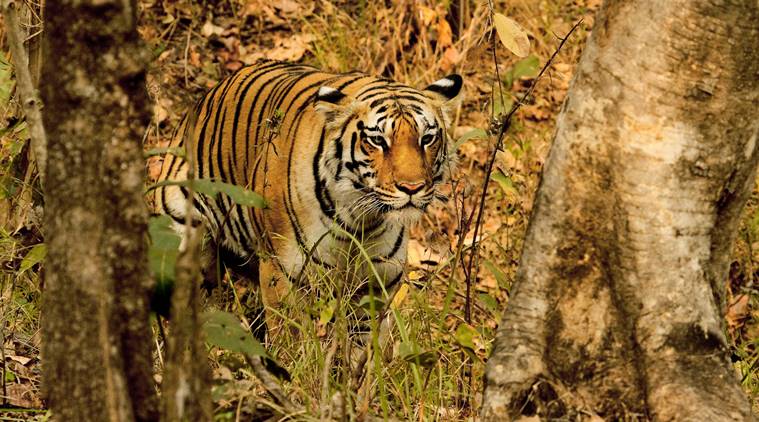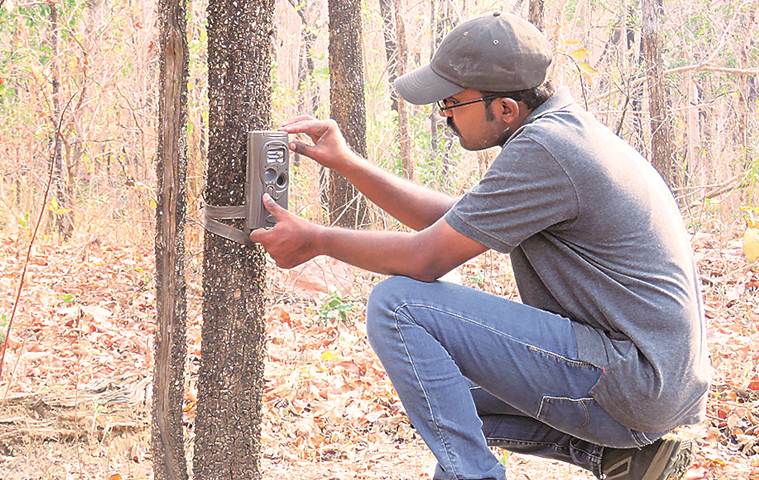- India
- International
Chhattisgarh: Its count down to less than half, state looks at Panna
Established as a wildlife sanctuary in 1975, Achanakmar in Chhattisgarh’s Mungeli district was declared a tiger reserve in 2009. In 2014, it held 11 tigers.
 Experts suggest that translocation of tigers should not be done without detailed study. (Source: Getty Images/Thinkstock)
Experts suggest that translocation of tigers should not be done without detailed study. (Source: Getty Images/Thinkstock)
IN THE good news held out by the tiger census, one glaring black mark was Chhattisgarh, where the numbers have dropped to less than half — from 46 in 2014 to an estimated 19 in the 2018 audit. The state has three tiger reserves, Achanakmar, Udanti-Sitanadi and Indravati. While in the case of Indravati, officials can cite the reserve’s location — enumeration comes with challenges in Naxal-hit South Bastar’s Bijapur — for the low numbers, NTCA sources say the bigger reason is the lack of any core protected area in any of the three reserves, spread over 4,159 sq km.
Established as a wildlife sanctuary in 1975, Achanakmar in Chhattisgarh’s Mungeli district was declared a tiger reserve in 2009. In 2014, it held 11 tigers. The reserve is also known for leopards, bisons, flying squirrels, Indian giant squirrels, chinkara, wild dogs, hyenas, sambars, chitals, over 150 species of birds, and for its wide variety of flora.
The Udanti-Sitanadi tiger reserve also came up around the same time, with two reserves combined together. Officials said that during the latest survey, they found only two confirmed tigers, compared to four in 2014.
The 2014 survey estimated 11 tigers in Indravati, while in 2018, officials said they were unable to get any confirmed evidence of tigers here.
 Camera traps being set up at the Udanti-Sitanadi reserve. Express
Camera traps being set up at the Udanti-Sitanadi reserve. Express
Atul Shukla, Principal Conservator of Forests, Chhattisgarh, admitted the tiger numbers were “truly shocking”. “We are carrying out our own analysis on what has gone wrong. We are focusing on solutions such as in-situ breeding and have sent two senior officers to Panna because they too at one point had very low numbers but have brought these up. We will see what we can take from their experience.”

While admitting that Indravati was insurgency-hit, Nitin Desai, Director, Central India, for the Wildlife Protection Society of India, says similar reasons couldn’t be given for Achanakmar and Udanti-Sitanadi. “Officials should have made better decisions there, but are focusing more on wild buffaloes than the tiger,” Desai said.
The state animal of Chhattisgarh, the wild buffalo is endangered, with its numbers showing a drastic decline despite conservation attempts.
“It (the fall in tiger numbers) is a combination of several factors,” Desai says. “One is encroachment and habitat loss. The second thing is tigers are competing with humans in many areas. There are no core areas in the state.”
Desai also suspects that local gangs may be targeting tiger prey. “There may not be many gangs directly killing tigers… but tigers may not be finding anything to eat.”
Chhattisgarh, especially Indravati National Park in Bijapur, presents its own sets of challenges. An official familiar with the survey in the park says that “the NTCA, WII and Forest Department” can deal with all kinds of access and terrain challenges, “except threat to life”. “In Bijapur, camera traps are out of the question because the Maoists will not let that happen. All Forest Department officials are also representatives of the government, so we do venture inside, but not very deep. The terrain isn’t easy as well. Without any transport, or the normal tools at our command, and most importantly, due to fear of reprisal, it is very difficult to carry out normal work. In Indravati, all we can do is collect scat (faeces),” an official says.
Also read | Palamau, Jharkhand; Buxa, West Bengal: At reserves where no tigers registered, shock, denials
Officials add that there could be another reason for the fall in numbers. With all three reserves either bordering Madhya Pradesh, Odisha or Andhra Pradesh, tigers could have moved across the border.
However, experts argue that while this is possible, it was unlikely. “Tigers require a social space. For instance, Kanha has good protection and a good prey base. No tiger would shift from Kanha to outside, but will need to because of the social space. The territory that a tiger actively defends will compel the weaker individual to move away. The established theory is that we guard tiger source areas like Kanha and safeguard the habitat outside so that when the core centre disperses some tigers to outside areas, these should be receptive enough to host them,” an NTCA officer says.
For now, senior officers are waiting for the more extensive, reserve-wise analysis of tiger numbers, which is expected in a month. “This will give us more answers,” says one.
Apr 18: Latest News
- 01
- 02
- 03
- 04
- 05






































